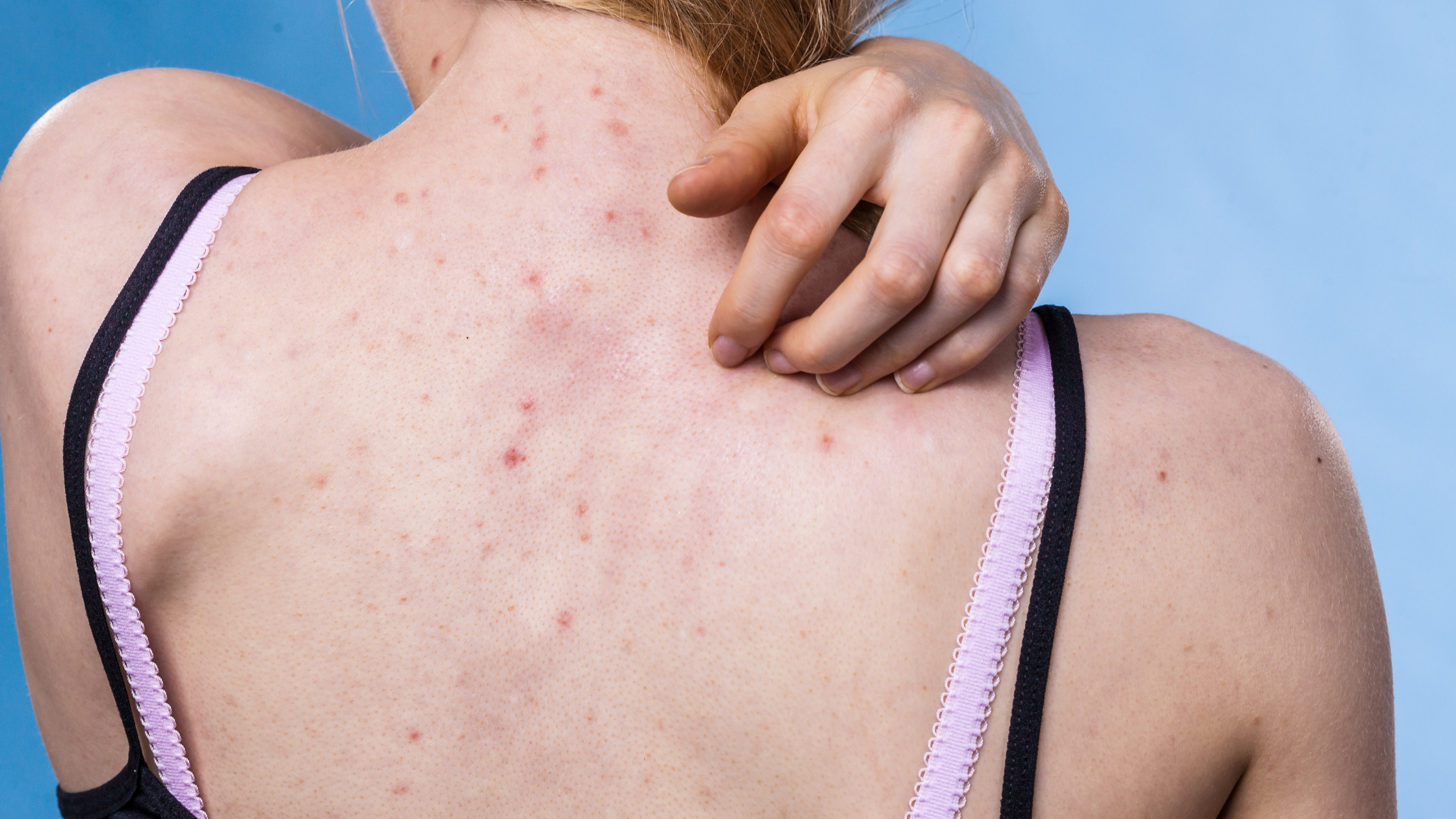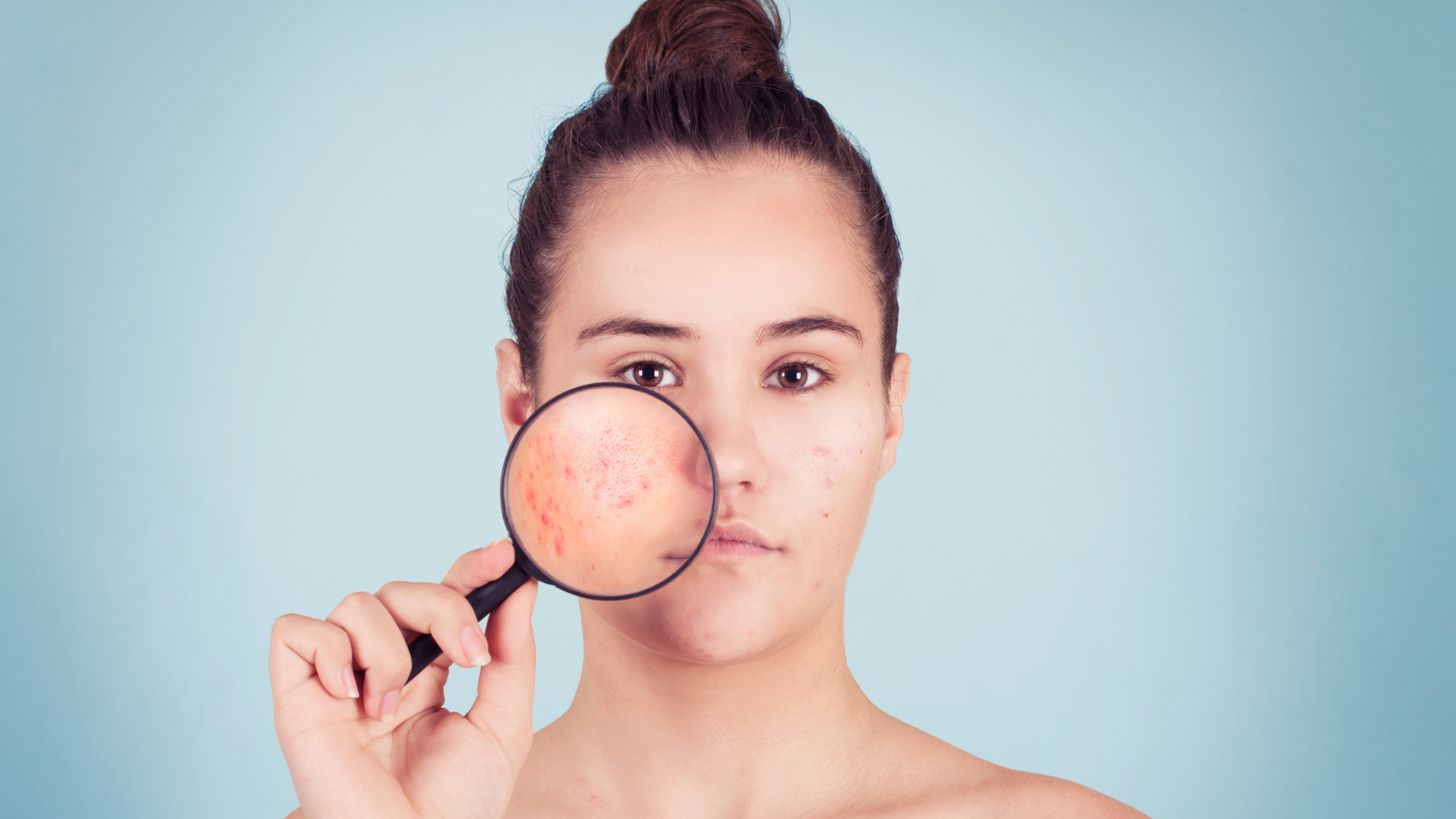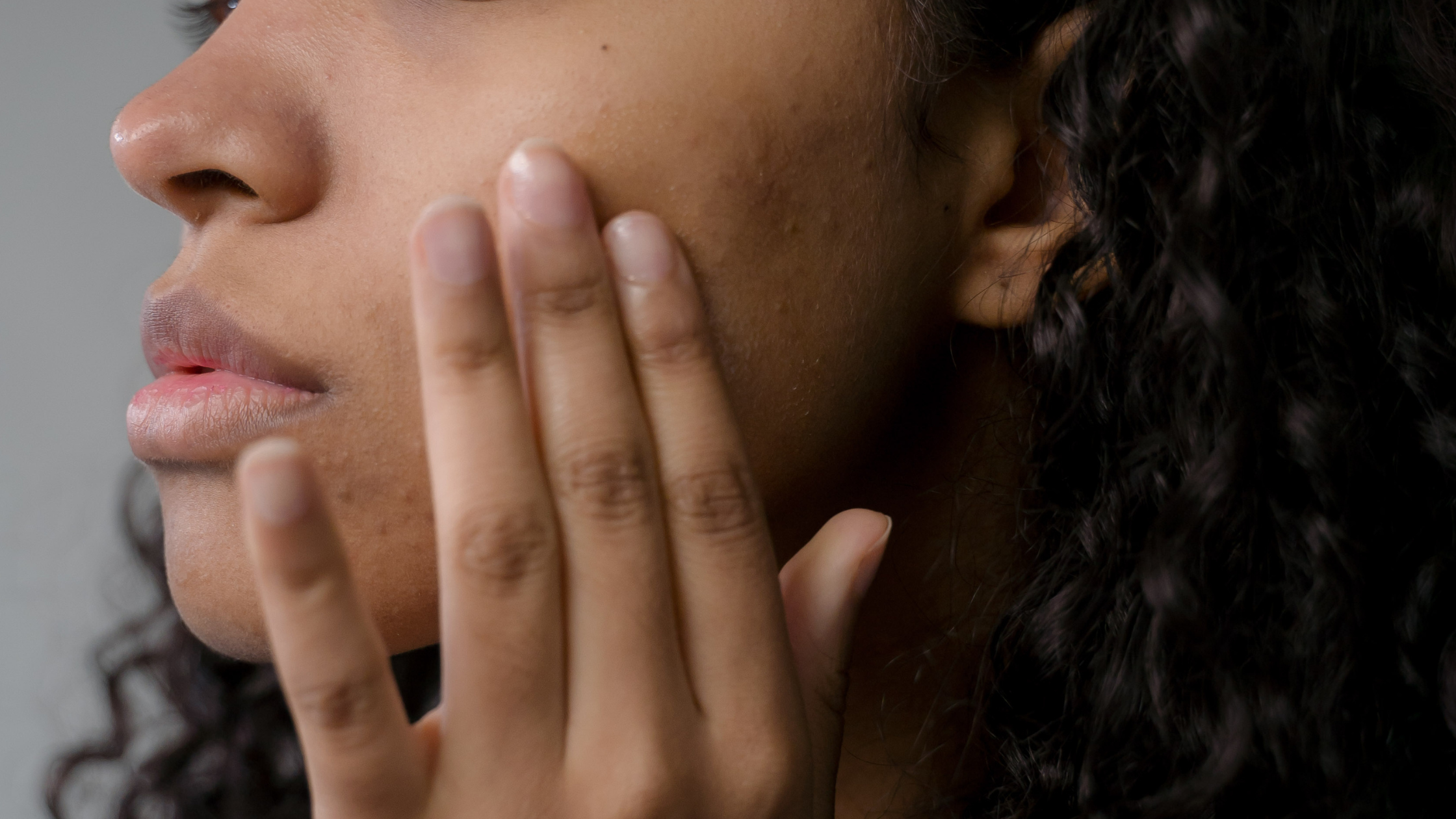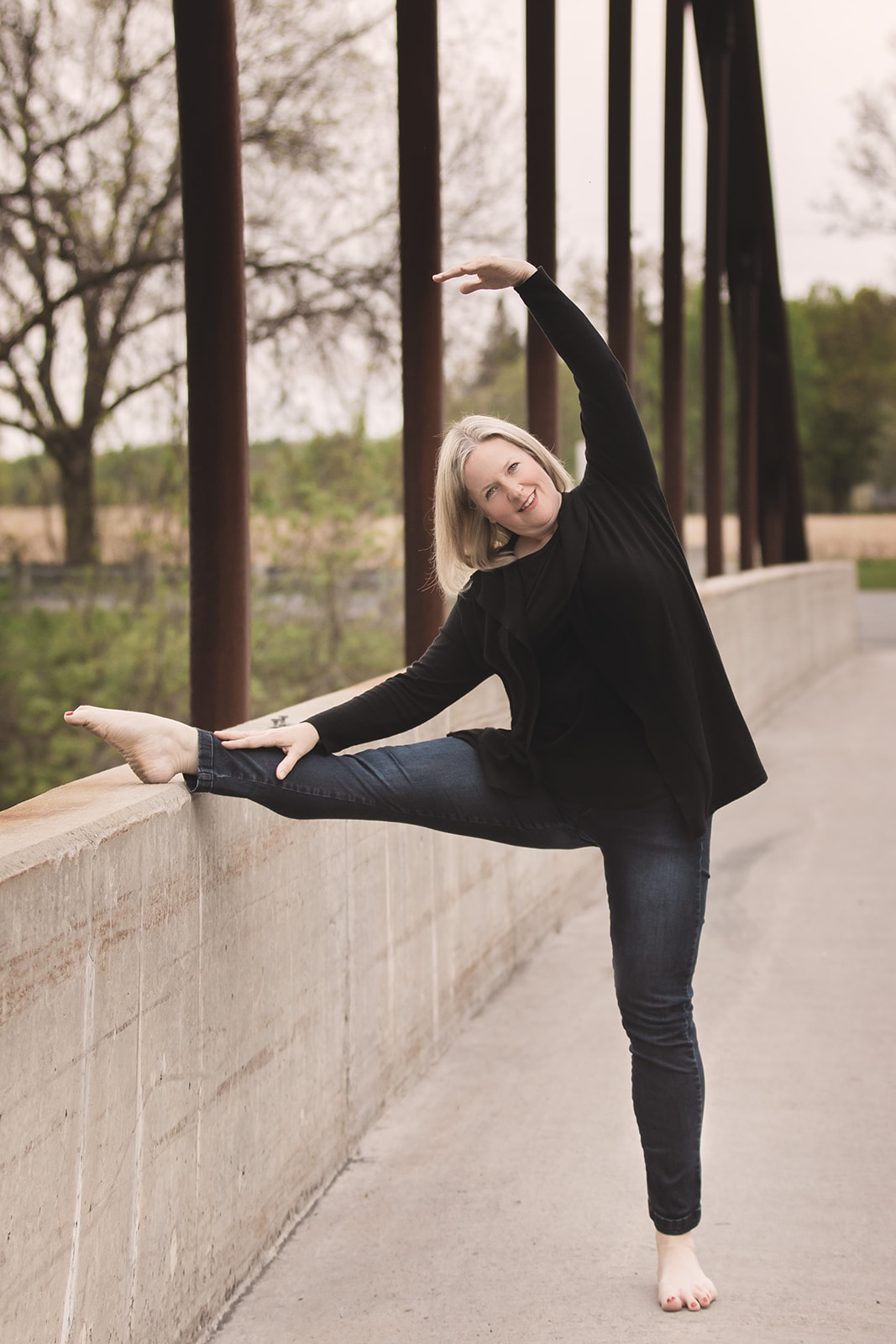If nothing has been working, and you’re looking for a treatment to help improve your acne, today I’ll share another tool you can add to your arsenal – Red Light Therapy. This pain-free and effective treatment has helped many clients win their battle with acne. I’ll discuss what it is, how it helps, and what to expect with red light therapy treatment for acne.
What is Acne and What Causes It?
Acne is a common skin condition that can cause lowered confidence and sometimes pain. What happens is hair follicles under the skin become clogged. Sebum—oil that helps keep skin from drying out—and dead skin cells plug the pores, which leads to outbreaks of lesions, commonly called pimples or zits. Most often, the outbreaks occur on the face but can also appear on the back, chest, and shoulders.
Bacteria feed on sebum breaking it down with a secretion. This secretion causes inflammation that shows up on your skin as swelling and redness. Sometimes acne is a genetic issue as the immune system’s response to inflammation can be hereditary. Androgens, which are hormones, also enlarge sebaceous glands and overproduce sebum.
Medications can also cause acne or worsen existing acne. Stress, hormonal imbalances, and even diet also play into acne production. High-fat, sugary foods can cause acne. So, cleaning up your diet while treating your acne is always recommended.

Acne Treatments
Over-the-counter or prescription topical ointments are commonly used to treat acne. Many people also try in-office treatments like laser and LED light therapy, especially for prolonged acne or acne scars.
What is Light Therapy?
NASA was the originator of using red LED lights to help heal astronauts’ bodies. Red light delivers energy to the cells without the heat that can damage the body. Cells were able to regenerate quickly due to this energy.
When used to help with acne, light-emitting diode therapy uses artificial light to affect the skin at a cellular level. Red light therapy sends red and near-infrared light waves into the skin, stimulating the mitochondria. This prompts adenosine triphosphate production (ATP) for cell regeneration.
The more ATP, the more effectively your cells repair damage in the body – leading to youthful-looking skin and a reduction in scarring. Red light therapy goes even further, boosting antioxidant production and heat proteins.
Does Light Therapy Work on Acne?
Red light therapy treats many skin conditions like wrinkles and rosacea and conditions in other areas of the body. And yes, light therapy works on acne, benefitting cellular health and growth. Acne forms in your pores due to the oil, dirt, bacteria, and dead skin cells trapped within.
Those pores then turn into acne bumps. Light kills bacteria, soothes sebaceous glands, and reduces inflammation. The red light penetrates the skin and helps your cells heal and restore damaged tissue. It also produces collagen production, which helps to prevent breakouts in the future.
Which Light Therapy is Best for Acne?
LED light therapy is done with blue and red lights, killing acne-producing bacteria. Red light therapy is effective with acne due to its anti-inflammatory benefits. When red light waves are applied to the skin, the skin cells are aided in energy production.
It also speeds healing, collagen, and elastin regeneration and reduces scarring. Red light therapy does its magic below the surface, soothing and repairing tissue.
Red Light Therapy Benefits

- Tissue Restoration: Red light therapy helps your cells repair skin tissue damage while reducing scarring.
- Cellular Regeneration: New cells must replace those old cells that die off. Red light therapy helps your epidermis repair acne damage and reduce wrinkles.
- Reduced Inflammation: Clogged follicles due to excess oil and dead skin cell build-up cause swelling and inflammation, which can be painful. Red light therapy will encourage healing, reducing inflammation.
- Boosted Circulation: Red light therapy triggers nitric oxide production at the cellular level. This is the body’s natural vasodilator. When this happens, the blood vessels are relaxed and expand, increasing blood flow which helps oxygen and nutrients reach the cells. The red light penetrates the epidermal and dermal layers and increases circulation to form new capillaries.
- Increased Collagen Production: Red light therapy helps to boost collagen production as it penetrates the skin. Collagen lessens over time as we age. With increased collagen, your skin can repair itself and diminish the appearance of acne scars.
Red light therapy can also be paired with other acne treatments to improve results.
Does Red Light Therapy Help Hormonal Acne?

What to Expect During An RLT Session
You should arrive at the office with clean skin for your red-light therapy treatment. You’ll lie down on a warm heated massage table and have the light treatment that is best for your skin condition. Sessions will last between fifteen and thirty minutes, with the light applied in a circular motion.
You’ll want to avoid the sun and tanning beds for about a week before treatment and wear sunscreen every day after treatment during recovery. You may notice that your skin has some redness immediately after your session. As red-light therapy is non-invasive, there is no downtime. You can return to your daily activities immediately after your treatment.
How Often Should I Get Red Light Therapy?

What About At-Home Treatments?
LED light therapy in-home treatments don’t offer the same quality as you would with medical-grade equipment found in a clinician’s office. Treatment performed in-office is more effective.
Book An Appointment For Acne Reduction
Red light therapy can improve your acne by healing the skin and boosting collagen production. The non-invasive treatment is safe and effective in acne treatment. While there are home remedies, the best results are found when working with a trained clinician.
To find out more about red light therapy and how it can help you, book your complimentary call with me.
Did you like this article? You might also like:
The Amazing Benefits of Red Light Therapy
Rapid Relief From Scar Tissue Pain
What’s Causing Your Lower Back Pain — and How to Find Relief


0 Comments